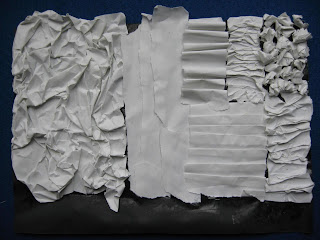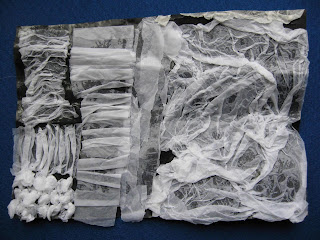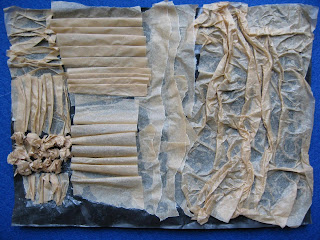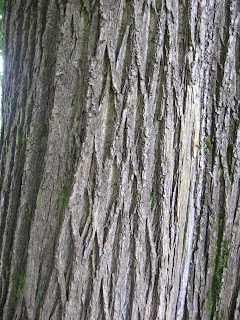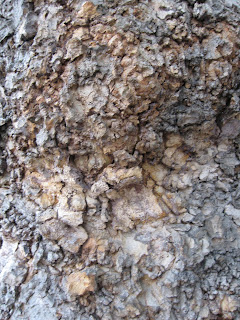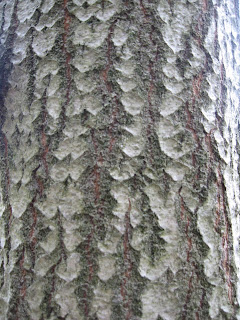I tried the same paper manipulations with different paper types.
- Crumpling
- tearing
- Ridges
- Creased tucks
- crumpled balls
- Pleats
Tissue Paper Manipulations.
Tissue paper was gathered using machine stitching and gathered.

Paper manipulations using various types of paper.
The photo below shows various paper manipulations. Where possible I tried the same effect with 2 types of paper - hard and soft.
- Knotted crepe paper strips.
- Tiny crumpled balls in crepe paper and cartridge paper.
- Two strips, folded over each other to form concertina effect - in cartridge paper and tissue paper.
- Strips of cartridge paper with edges snipped and then rolled up.
- As above but with long snipped edge.
- Cones made from tissue paper and cartridge paper.
- Pieces of torn card piled on top of each other - decreasing size to form contours.
- Tissue paper manipulated in the glue to form ridges
- Strips of crepe paper twisted
- strips of tissue paper, twisted and thenformed into loose knots.
- Strips of thin paper stuck down loosely

Paper Relief Surfaces
These samples are based on tree bark
 |

